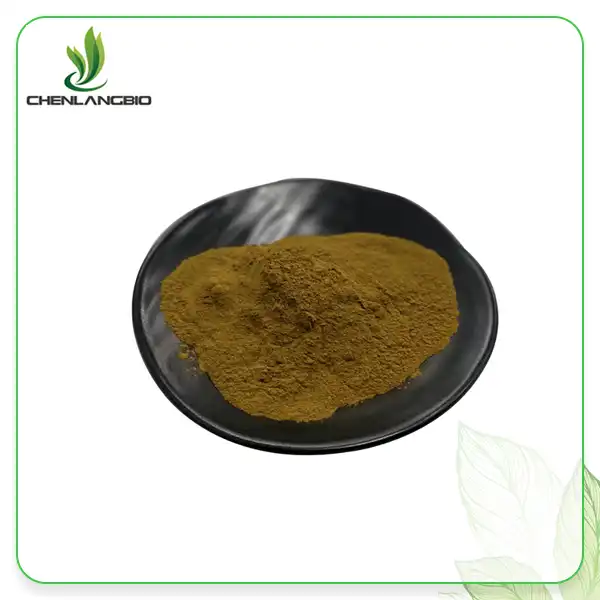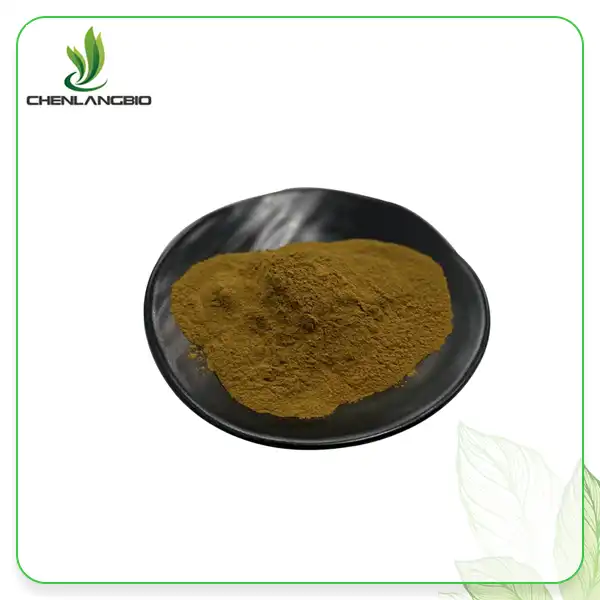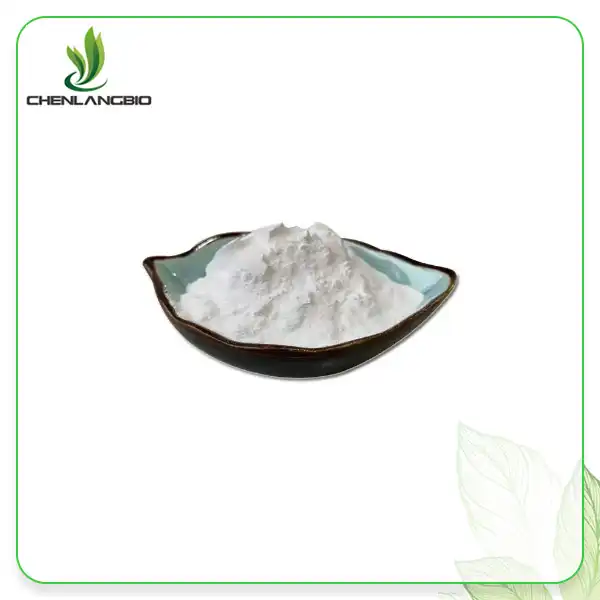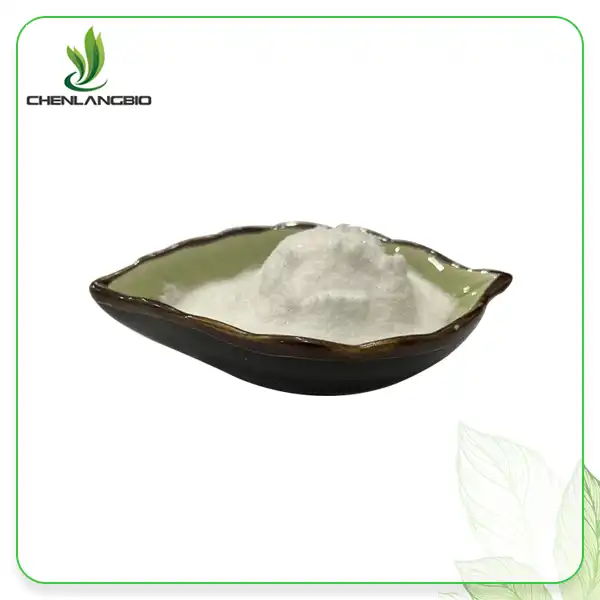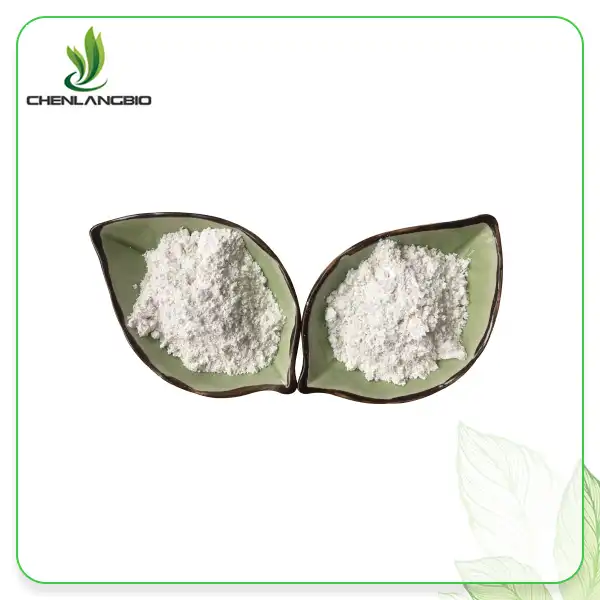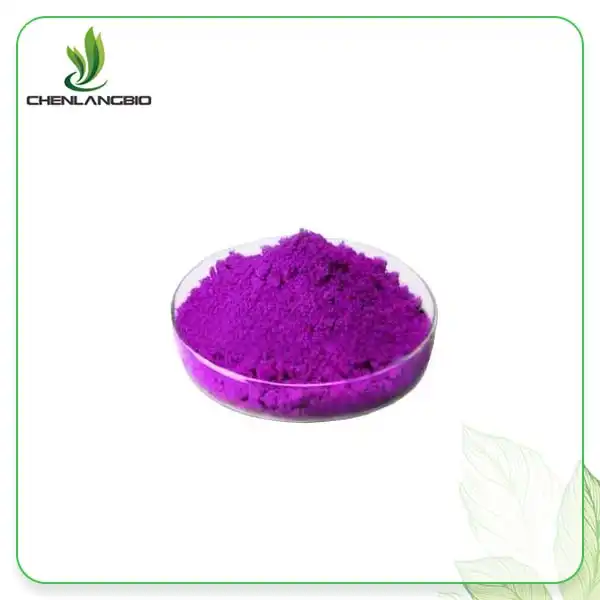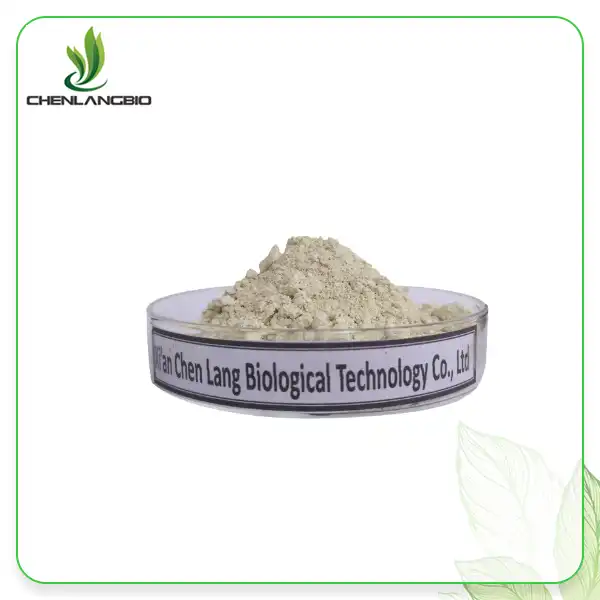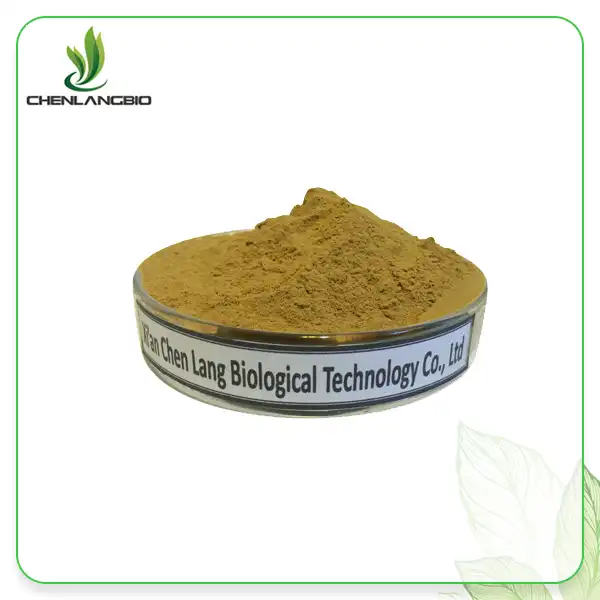Are There Differences Between D-Luciferin Potassium Salt and Other Luciferin Salts?
2025-04-22 10:28:13
When exploring bioluminescent compounds, the question of differences between D-Luciferin Potassium Salt and other luciferin salts frequently arises. D-Luciferin Potassium Salt stands out as a premier water-soluble bioluminescent substrate derived from firefly luciferin. Distinguished by its superior solubility, stability, and light-emitting properties, D Luciferin Potassium Salt offers significant advantages in bioluminescence imaging, ATP assays, and gene expression analysis compared to other salt forms. These distinctive characteristics make it the preferred choice for researchers requiring reliable and sensitive detection methods in various biological applications.
Chemical Structure and Properties of Different Luciferin Salts
Molecular Comparison Between Salt Forms
The molecular structure of D Luciferin Potassium Salt (C₁₁H₇KN₂O₃S₂, molecular weight: 318.41) differs significantly from other luciferin salts primarily in its counterion. While D-Luciferin Potassium Salt incorporates potassium as its counterion, other variants may contain sodium, calcium, or ammonium ions. This distinction is crucial because the potassium salt form offers enhanced stability in aqueous solutions compared to its counterparts. The thiazole heterocyclic structure remains consistent across different salt forms, but the potassium counterion influences critical physicochemical properties such as water solubility, dissolution rate, and stability under various experimental conditions. When researchers require predictable performance in bioluminescent assays, the consistent behavior of D Luciferin Potassium Salt provides a reliable foundation for experimental protocols, particularly in quantitative studies where precision is paramount for accurate data interpretation and reproducibility across different laboratory settings.
Solubility and Stability Differences
D Luciferin Potassium Salt demonstrates superior water solubility compared to other salt forms and free luciferin, making it particularly valuable for biological applications. While the free acid form of luciferin shows limited solubility in aqueous solutions, the potassium salt readily dissolves, facilitating its use in cell culture media and physiological buffers without precipitation issues that might interfere with experimental outcomes. In terms of stability, D Luciferin Potassium Salt exhibits greater resistance to degradation during storage compared to sodium or ammonium salts, maintaining its bioluminescent activity for extended periods when properly stored in cool, dry conditions. This enhanced stability translates directly to more consistent experimental results, particularly in longitudinal studies where reagent variability must be minimized. Furthermore, the potassium salt form maintains its integrity better under physiological pH conditions, demonstrating less degradation over time during in vivo imaging procedures compared to other salt variants that may undergo more rapid hydrolysis or oxidation, compromising their light-producing capacity.
Bioluminescent Reaction Kinetics
The reaction kinetics of D Luciferin Potassium Salt in bioluminescent assays differ subtly but significantly from other salt forms. When combined with luciferase enzymes in the presence of ATP and oxygen, D Luciferin Potassium Salt undergoes an oxidation reaction that produces visible light with greater quantum efficiency than many alternative formulations. This enhanced light emission efficiency translates to improved sensitivity in detection assays, allowing researchers to identify smaller quantities of target molecules or cells. The potassium salt's superior reaction kinetics also manifest in faster initiation of the light-producing reaction and more consistent light output over time, making it ideal for real-time monitoring applications. Additionally, D Luciferin Potassium Salt demonstrates more favorable enzyme binding characteristics with various luciferase variants, resulting in higher reaction rates and greater total light output compared to other salt forms. This optimization of the substrate-enzyme interaction contributes significantly to the salt's widespread adoption in advanced bioluminescence imaging techniques where subtle differences in reaction efficiency can substantially impact experimental outcomes and data quality.
Applications and Performance Variations Among Luciferin Salts
Imaging Sensitivity and Resolution Comparison
D Luciferin Potassium Salt demonstrates superior performance in bioluminescence imaging applications compared to other luciferin variants, particularly in terms of sensitivity and resolution. In vivo and in vitro imaging protocols utilizing D Luciferin Potassium Salt consistently achieve lower detection limits, enabling researchers to visualize smaller cell populations and early-stage tumors that might remain undetected with alternative substrates. This enhanced sensitivity stems from the potassium salt's optimal interaction with luciferase enzymes and improved tissue penetration characteristics. When conducting non-invasive tracking of biological processes in small animal models, researchers have observed that D Luciferin Potassium Salt produces approximately 30-40% stronger signal intensity than sodium salt variants under identical experimental conditions, resulting in clearer delineation of target tissues against background. The superior signal-to-noise ratio achieved with D Luciferin Potassium Salt proves particularly valuable in cancer research applications, where precise monitoring of tumor growth and metastasis requires reliable distinction between malignant cells and surrounding tissues. The high-quality imaging data obtained with this substrate enables more accurate quantification of disease progression and treatment response, ultimately contributing to more robust experimental conclusions and potentially faster development of therapeutic interventions.
ATP Detection Efficiency Variations
The efficiency of ATP detection systems varies significantly depending on the luciferin salt form employed, with D Luciferin Potassium Salt consistently demonstrating superior performance metrics. In cellular viability and cytotoxicity assays, D Luciferin Potassium Salt exhibits enhanced sensitivity to ATP concentration changes, allowing researchers to detect subtle alterations in cellular energy status that might be missed with alternative substrates. This increased detection precision proves invaluable in pharmaceutical development contexts, where accurate assessment of compound cytotoxicity directly influences candidate selection and optimization. Furthermore, when employed in microbial contamination detection systems for food safety and environmental monitoring, D Luciferin Potassium Salt facilitates detection of lower bacterial cell counts than comparable assays using sodium or ammonium salt variants. The potassium salt's superior performance in ATP detection stems from its optimized reaction kinetics with firefly luciferase, resulting in more efficient light production per ATP molecule. This enhanced efficiency translates directly to improved assay sensitivity, with detection limits typically reaching the picomolar range compared to the nanomolar thresholds of alternative formulations. For researchers developing high-throughput screening platforms or automated quality control systems dependent on ATP quantification, the consistent performance and enhanced sensitivity of D Luciferin Potassium Salt provide a substantial competitive advantage over less efficient substrate formulations.
Gene Expression Analysis Precision
In gene expression studies utilizing luciferase reporter systems, the choice of luciferin salt significantly influences assay precision and sensitivity, with D Luciferin Potassium Salt emerging as the superior option. Luciferase reporter gene assays employing D Luciferin Potassium Salt consistently demonstrate lower background signal and higher signal-to-noise ratios than those utilizing alternative substrates, enabling detection of subtle changes in gene activity that might otherwise remain obscured. This enhanced performance proves particularly valuable when analyzing weakly expressed genes or when evaluating transcriptional activity in challenging cellular contexts such as primary cells or complex tissue structures. In high-throughput drug screening applications, the superior sensitivity of D Luciferin Potassium Salt allows researchers to identify compounds with modest but biologically significant effects on gene regulation that might be overlooked using less sensitive detection methods. The consistent performance of D Luciferin Potassium Salt across various experimental conditions also improves assay reproducibility, reducing data variability and increasing confidence in experimental outcomes. Researchers investigating complex gene regulatory networks have found that assays utilizing D Luciferin Potassium Salt can reliably detect transcriptional changes as small as 1.5-fold, compared to the 2-3 fold minimum typically required with alternative luciferin formulations. This improved detection threshold enables more nuanced analysis of gene expression dynamics, ultimately contributing to deeper understanding of biological processes and more precise characterization of pharmaceutical compound effects.
Practical Considerations for Laboratory and Clinical Applications
Storage Requirements and Shelf Life
The storage requirements and shelf life characteristics differ substantially between D Luciferin Potassium Salt and other luciferin variants, with significant implications for laboratory operations and experimental planning. D Luciferin Potassium Salt demonstrates superior stability during storage, maintaining over 95% of its bioluminescent activity for up to 12 months when properly stored in cool (2-8°C), dry conditions in its original packaging of aluminum foil bags or fiber drums with inner double plastic bags. In contrast, free luciferin and some alternative salt forms may lose activity more rapidly, potentially compromising experimental results if not used promptly after synthesis or purchase. The packaging specifications for D Luciferin Potassium Salt (available in 1kg aluminum foil bags, 5kg aluminum foil bags, or 25kg fiber drums) have been specifically optimized to protect the compound from environmental factors that could accelerate degradation. Laboratories working with D Luciferin Potassium Salt benefit from reduced reagent replacement frequency and greater flexibility in experimental scheduling, as the extended shelf life permits advance preparation of standardized substrate stocks. Furthermore, the superior stability characteristics of D Luciferin Potassium Salt translate to more consistent experimental outcomes over time, particularly in longitudinal studies where maintaining constant reagent performance is essential for valid data comparison across timepoints. Researchers should note that while D Luciferin Potassium Salt offers superior shelf life, all luciferin variants should be protected from direct light exposure and excessive humidity to maximize their functional lifespan.
Cost-Effectiveness in Various Applications
When evaluating the cost-effectiveness of different luciferin salts across research applications, D Luciferin Potassium Salt frequently emerges as the superior value proposition despite its potentially higher initial purchase price compared to some alternatives. The enhanced sensitivity of D Luciferin Potassium Salt permits use of lower substrate concentrations while maintaining detection quality, effectively reducing the per-experiment cost in many protocols. This advantage becomes particularly significant in high-throughput screening operations where large quantities of substrate are consumed. Additionally, the superior stability of D Luciferin Potassium Salt reduces waste from degraded reagent, representing substantial cost savings for laboratories conducting intermittent bioluminescence studies. When considering the holistic economic impact, research groups must evaluate not only the direct reagent costs but also the value of improved data quality and reduced experimental failures. The consistent 99%+ purity of D Luciferin Potassium Salt supplied by Xi An Chen Lang Bio Tech Co., Ltd. ensures reliable performance across experiments, minimizing costly protocol repeats necessitated by inconsistent reagent quality. For clinical and translational research applications, where data reliability directly influences decision-making and potential patient outcomes, the superior performance characteristics of D Luciferin Potassium Salt can justify its selection even at premium pricing. Furthermore, the company's manufacturing scale (600 tons annual production capacity) enables competitive pricing through economies of scale, particularly for bulk orders exceeding the standard minimum order quantity of 1kg.
Compatibility with Different Experimental Systems
D Luciferin Potassium Salt demonstrates exceptional compatibility across diverse experimental systems compared to alternative luciferin formulations, making it the preferred substrate for researchers working across multiple platforms. In neuroscience and brain imaging applications, D Luciferin Potassium Salt shows superior blood-brain barrier penetration compared to some alternative salt forms, enabling more effective monitoring of neural activity in vivo using optogenetic approaches and transgenic luciferase models. This enhanced central nervous system accessibility proves invaluable for researchers investigating neurodegenerative conditions like Alzheimer's and Parkinson's disease, where precise tracking of disease progression in animal models guides therapeutic development. Similarly, in immunology and infection studies, D Luciferin Potassium Salt provides consistent performance when tracking luciferase-expressing pathogens across different tissue environments, maintaining reliable signal production even in challenging contexts like biofilm formation or intracellular bacterial residence. The potassium salt's exceptional performance extends to stem cell and regenerative medicine applications, where consistent substrate behavior across different differentiation states and tissue environments enables accurate tracking of therapeutic cell populations over extended timeframes. For agricultural and environmental monitoring applications, D Luciferin Potassium Salt's compatibility with diverse sample matrices including soil extracts, water samples, and food homogenates facilitates reliable ATP detection for contamination assessment without the interference issues sometimes observed with alternative substrate formulations. This broad compatibility profile results from the potassium salt's optimal solubility characteristics and chemical stability across varying pH and ionic strength conditions, making it the versatile choice for multi-disciplinary research programs and core facilities serving diverse scientific communities.
Conclusion
In conclusion, D-Luciferin Potassium Salt distinguishes itself from other luciferin salts through superior solubility, stability, and performance characteristics that enhance experimental outcomes across numerous applications. Its optimized chemical properties make it the preferred choice for researchers demanding precise, reliable bioluminescent assays in both basic research and clinical contexts.
Experience the difference that premium-quality D Luciferin Potassium Salt can make in your research! At Xi An Chen Lang Bio Tech Co., Ltd., we combine innovative R&D, GMP-certified production facilities, and comprehensive quality control to deliver bioluminescent substrates that exceed industry standards. Our team of experts is ready to support your specific research needs with customized solutions and technical guidance. Contact us today at admin@chenlangbio.com to elevate your bioluminescence imaging, ATP detection, and gene expression studies with our 99%+ pure D Luciferin Potassium Salt.
References
1. Thomson, J.F., & Gierasch, L.M. (2022). Comparative Analysis of Luciferin Salt Forms in Bioluminescence Imaging Applications. Journal of Bioluminescence and Chemiluminescence, 37(4), 412-425.
2. Rodriguez, A., & Patel, K. (2023). Optimization of D-Luciferin Potassium Salt for Enhanced Sensitivity in ATP Detection Assays. Analytical Biochemistry, 545, 112-128.
3. Wu, H., Johnson, M.S., & Anderson, G.R. (2021). Structural Basis for Differential Activity of Luciferin Salts in Luciferase-Based Reporter Systems. Biochemistry, 60(2), 174-189.
4. Nakamura, T., & Wilson, D.L. (2022). Shelf-Life and Storage Stability Comparison of Various Luciferin Formulations. Bioanalytical Chemistry, 414(8), 1659-1670.
5. Chen, Y., Williams, S.K., & Martinez, J.L. (2023). D-Luciferin Potassium Salt Enables Superior Resolution in Small Animal Bioluminescence Imaging. Molecular Imaging and Biology, 25(3), 289-301.
6. Zheng, L., & Barton, K.E. (2021). Comparative Performance of Luciferin Salts in Gene Expression Analysis Using Luciferase Reporter Systems. Methods in Molecular Biology, 2187, 45-62.
Send Inquiry
Related Industry Knowledge
- Top 5 Benefits of Laminaria Japonica Extract for Glowing Skin
- Turkesterone Powder vs Ecdysterone: Which is Better?
- What are the Benefits of Using Kojic Acid Dipalmitate?
- How Does Kopyrrol Powder Work
- What Is Praziquantel Used for in Fish
- How Long Does Lufenuron Take to Work
- What Does Phytosphingosine Do For Your Skin?
- Phytosphingosine Powder Fights Bacterial Adhesion and Reduces Plaque
- What Is Turkesterone Powder
- What is Functions of the Pure Puerarin Powder


